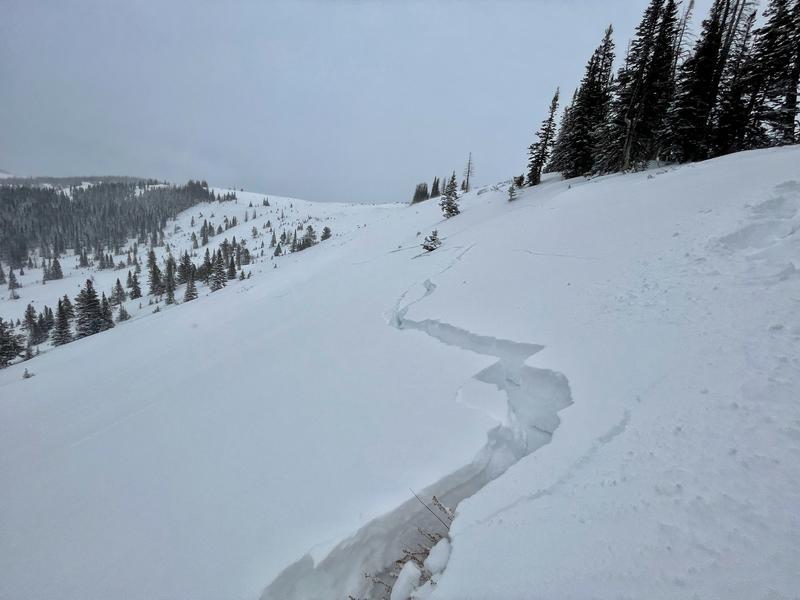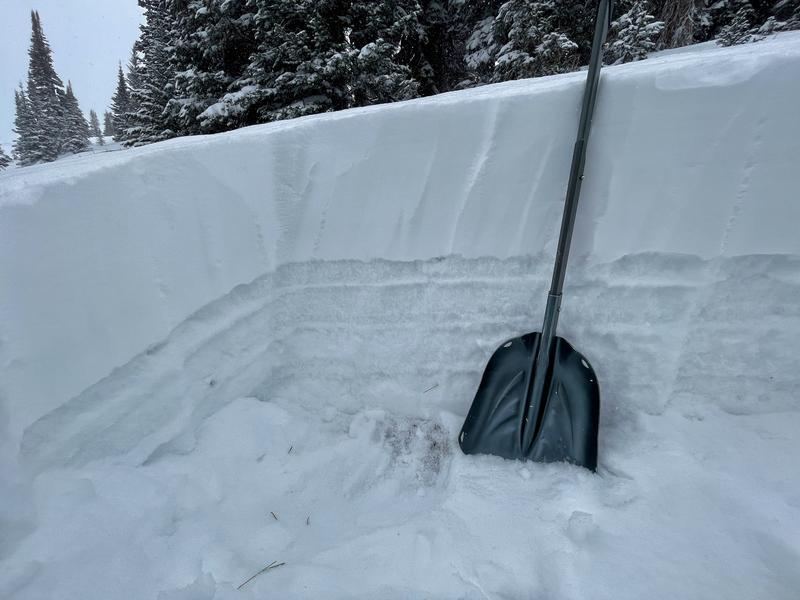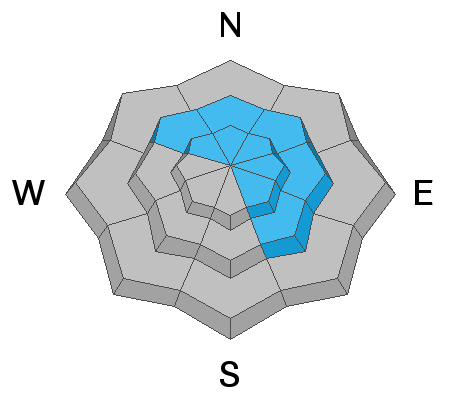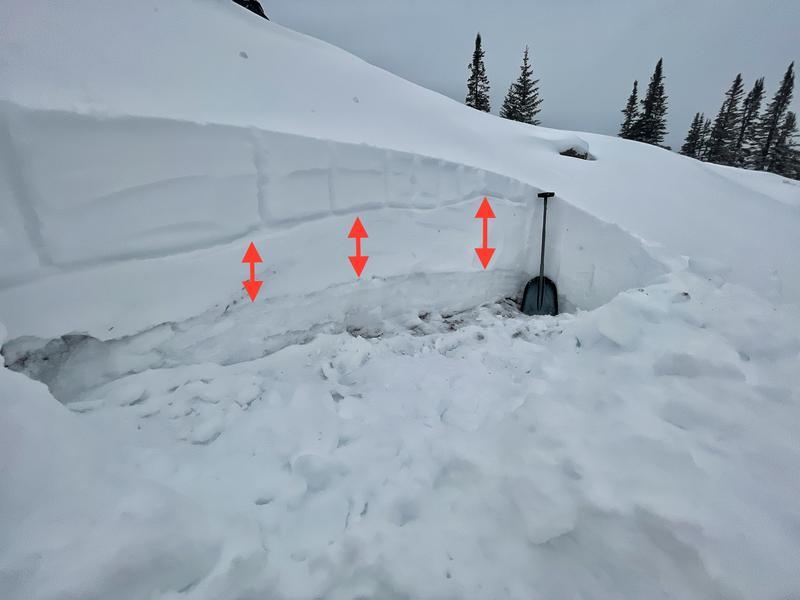Forecast for the Uintas Area Mountains

Issued by Mark Staples on
Friday morning, December 17, 2021
Friday morning, December 17, 2021
Triggering an avalanche today is likely on slopes facing north, east, and even southeast near and above treeline where the avalanche danger is CONSIDERABLE. The combination of a persistent weak layer of old October snow with a slab of new snow and wind drifted snow on top of it will produce avalanches. Lower elevations on these aspects below treeline have a MODERATE danger.
A LOW danger exists on slopes facing west and south where winds have stripped away snow and where old, weak, October snow doesn't exist. The problem is that there is minimal snow in these places and there is deeper snow where the avalanche danger is higher, so the answer is to simply ride low-angle slopes.
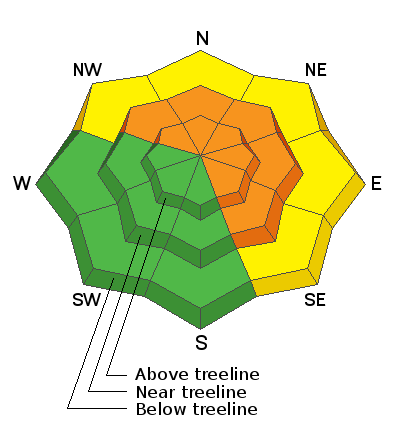
Low
Moderate
Considerable
High
Extreme
Learn how to read the forecast here


